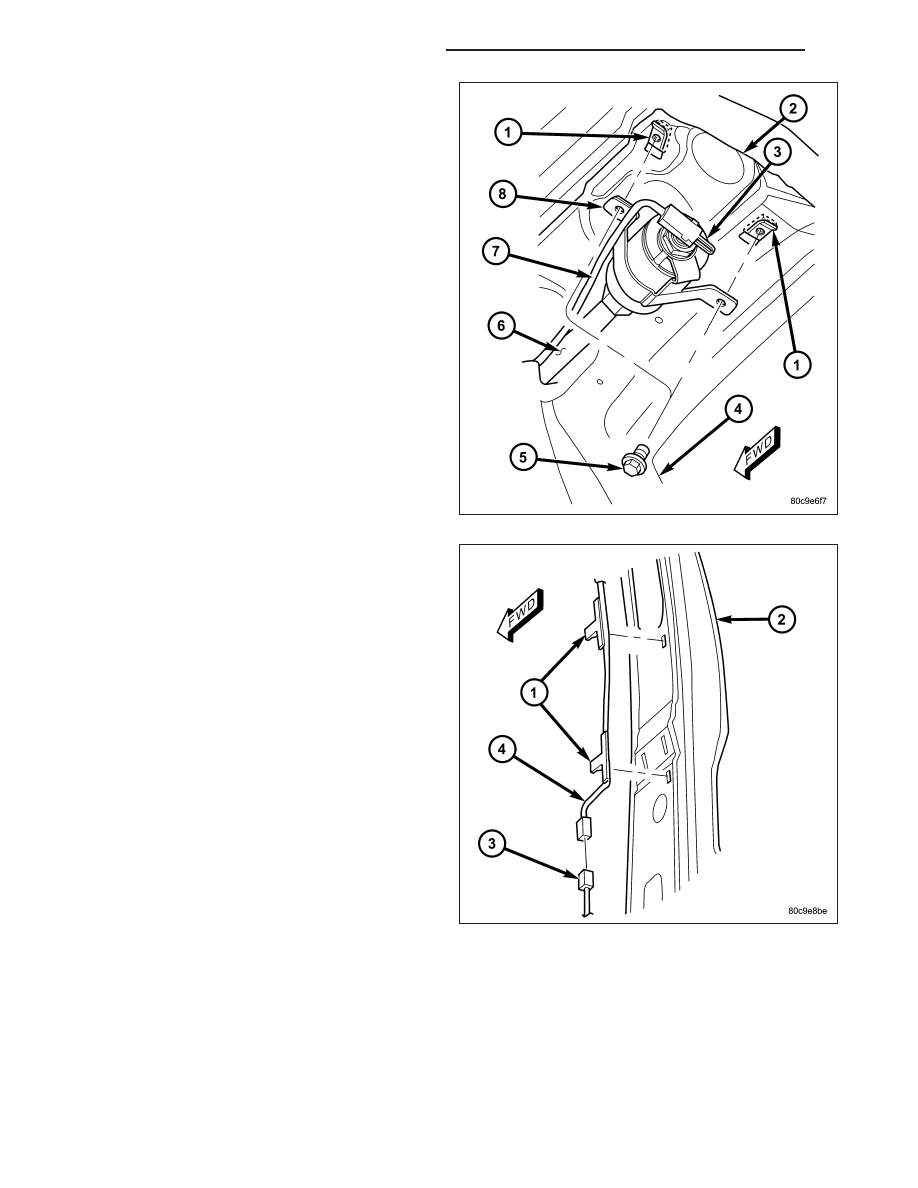Jeep Liberty KJ. Manual - part 241

3. Install and tighten the upper screw (5) that secures
the side curtain airbag inflator bracket (8) to the
U-nut (1) in the roof rail, followed by the lower
screw. Tighten the screws to 12 N·m (105 in. lbs.).
4. Working from the rear of the vehicle to the front,
install and tighten each of the three screws that
secure the side curtain airbag manifold tube brack-
ets to the U-nuts in the roof rail. Tighten the screws
to 12 N·m (105 in. lbs.).
5. Route the side curtain airbag pigtail wire (4)
through the trough along the top of the extruded
plastic airbag channel on the roof side rail, then
between the channel and the body down the B-pil-
lar (2).
NOTE: Be certain that the side curtain airbag pig-
tail wire is routed behind the airbag channel,
between the channel and the body above the B-pil-
lar.
6. Engage the three side curtain airbag pigtail wire
retainer clips (1) into the B-pillar.
7. Reconnect the side curtain airbag pigtail wire con-
nector to the body wire harness connector (3) near
the base of the B-pillar.
8O - 270
RESTRAINTS - SERVICE INFORMATION
KJ